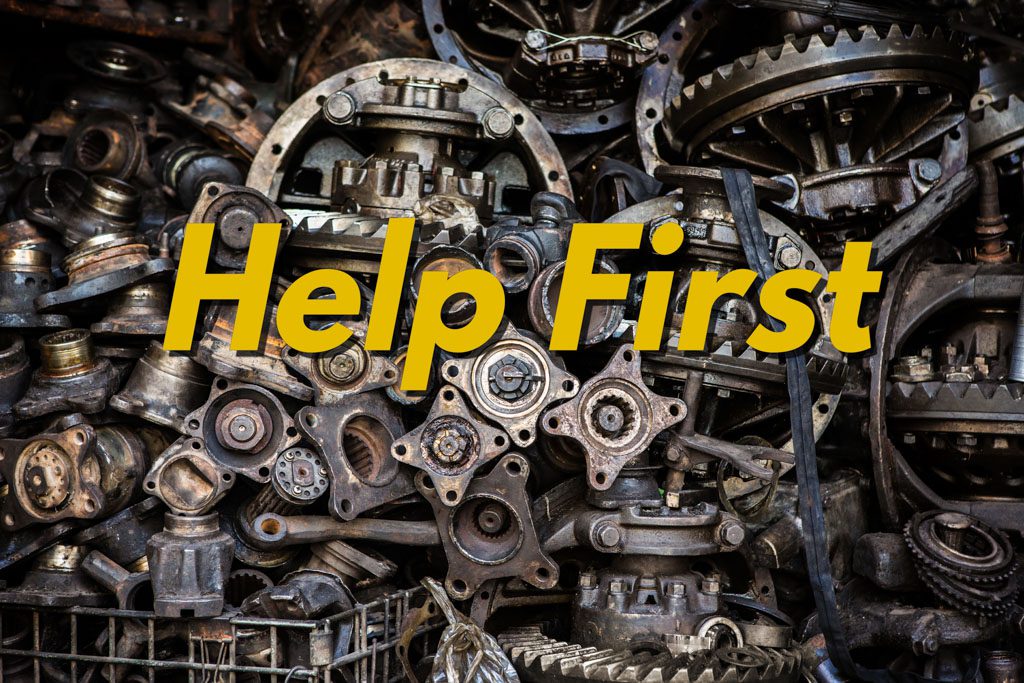What do the most successful fitness professionals do that others don’t?
They sell their service.
My biggest mistake—and probably yours—was believing that being the best fitness coach would make me the most successful fitness coach. So I studied planes of movement and energy metabolism. I drew graphs on the floor for my clients. I explained complex theories to them. Worst of all, I only read stuff that confirmed my faulty belief. You remember these, right?
“If you just keep your bathroom clean, they will come.”
“If you just love on your clients, they will bring their friends.”
“Treat them well, build up an emotional bank account and they will tell everyone about you.”
I wish those statements were true, but they’re not.
You can’t be a successful business owner without selling your service.
Maybe that made you shiver. It sure made me uncomfortable—until I realized that “sales” doesn’t mean “trickery.” It doesn’t mean “slime” or “fooling people.” It really just means “helping people.”
There’s a lot of bait-and-switch in the fitness industry. There’s a lot of slime.
I hate that stuff. But that doesn’t mean I can avoid sales. So I wrote the book “Help First” to explain how I learned to “sell without selling,” how to help your clients by extending your care and how to feel great while you grow.
In this series, I’ll tell you how to do the same. But for the first time, I’ll take it a step further and explain how to hire and train a salesperson to replace you. That’s usually the final step in the process of moving from Farmer Phase to Tinker Phase.
First: What Are We Selling?
We sell fitness coaching.
Fitness is achieved through the optimization of nutrition and exercise.
Coaching is the process of filtering information and prescribing the most elegant solution to a client.
After filtering, some coaches choose CrossFit. Some coaches choose Pilates. Some choose something else. We deliver our coaching one on one, in a small group session or in a large group session, depending on what the client needs.
After filtering, some coaches choose Paleo. Some choose the Zone Diet. Some choose something else. We deliver nutrition coaching one on one, in a small group session or in a shorter-term challenge, depending on what the client needs.
We do not sell a method—like Barre or CrossFit or HIIT or bootcamp. Those are our tools. We sell results.
We call this “The Prescriptive Model,” and we teach you how to implement it in RampUp.
How Do We Sell the Prescriptive Model?
The Prescriptive Model means building a 1:1 relationship with every client regardless of whether he or she prefers personal training or group training.
Every client starts with a No-Sweat Intro. Every client is given a Nutrition Prescription and an Exercise Prescription according to his or her needs.
Every client is reassessed every quarter. And each gets a new prescription based on new needs.
The real “Rx” in your gym is the best plan for your client—not what weight to use in today’s general group programming.
We teach The Prescriptive Model step by step in RampUp.
Listen to a podcast about The Prescriptive Model here.
What Tools Do We Need?
Starting from a blank slate, and selling fitness, let’s consider these questions:
- If 80 percent of our clients are seeking some sort of aesthetic goal first and foremost, what’s the best way to get them there?
- What tools are available to us?
- How will we measure progress?
- What equipment will we need to deliver this service?
- How many clients can we help? What if some of them were in a group?
- What do our prices need to be to make a good living at this?
With these questions in mind, would your first purchase be a high-spin barbell or a body-fat scale? Would you focus on your special flooring or on a nice, quiet office to give your clients privacy?
What About Marketing?
Marketing is how you talk to strangers. Sales is how you talk to friends.
Marketing can get you some attention. But sales will change their life.
There’s no sense pumping “leads” into your business until you can effectively sign them up for your service. You have to be good at sales—and comfortable at “selling” in a non-slimy way—before you do any marketing.
When gym owners improve their sales conversations (we call this “conversion” rate), it improves their marketing spend exponentially. Then they can start running Facebook ads.
Finally, How Do You Sell More?
You sell more by caring enough to change your clients’ lives.
Then you sell more by caring enough to change their environment. You ask, “How can I help your husband?” and “How can I help your friend Joanne?”
Then you sell more by caring enough to change their workplace. You ask, “How can I help your co-workers?”
Then you sell more by caring enough by helping their acquaintances. Then by the people who are on your email list.
This type of selling requires emotional investment. It requires bravery. It requires being courageous enough to ask—instead of just waiting.
Waiting means death.
In the next article in this series, I’ll answer the question, “Who Sells?” After that, I’ll help you hire and train a salesperson. Then I’ll share a process called Affinity Marketing and give you a downloadable guide with a step-by-step checklist.
Other Articles in This Series
Building a Sales Engine: Who Sells?
Building a Sales Engine: Hiring a Salesperson
Building a Sales Engine: Affinity to Infinity

